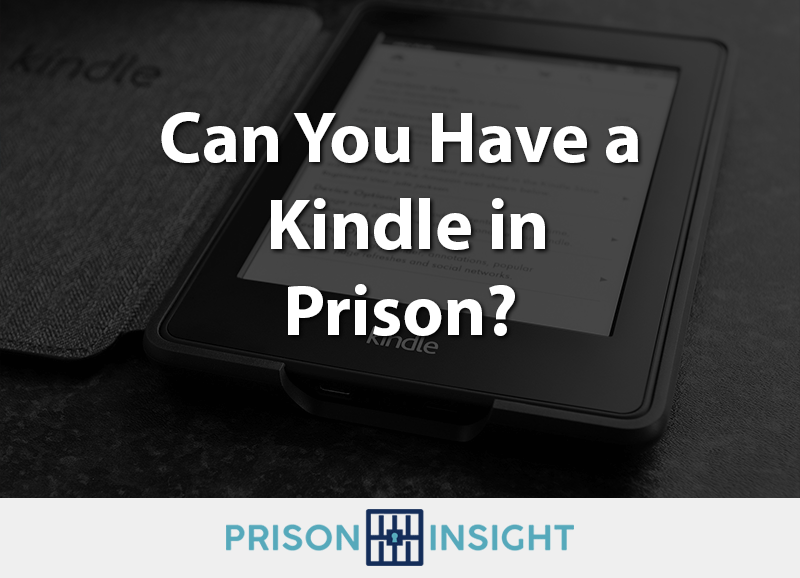Reading is one of the most popular ways to pass time in prison. Not only does it make the days go by a little bit faster, but reading can also take you away from your reality behind bars for a few hours each day and put you in a whole new world.
All prisons―no matter if they are state or federal―have some kind of library available to inmates. In the prison I was incarcerated in, we had a small library filled with fiction, non-fiction, and educational books, plus magazines and local newspapers.
However, the number of titles available in a prison library is limited to what is donated to each facility. Some prison libraries have a small budget to acquire new books, but the selection is still relatively small.
To make things more frustrating, there is only one copy of new releases and other popular titles. This means that getting your hands on one of those books can be extremely difficult. I’m pretty sure the waiting list for Orange Is the New Black was almost a year long.
All of this can be avoided by just buying a Kindle, right? Not quite. However, new technology is making its way into many prisons throughout the United States.
So, let’s get into today’s blog post: can you have a kindle in prison?
In this blog post, I will cover the following topics:
- What is an inmate tablet, and what can it do?
- Why are prisons allowing inmates to buy tablets?
What is an inmate tablet and what can it do?
Over the past few years, major prison communications companies like JPay and GTL have introduced inmate tablets. These two companies provide the telephone, money, and communication services for the majority of prisons throughout the United States.
While they are not Kindles (those aren’t allowed), the inmate tablets from JPay and GTL allow inmates to do everything from staying connected with their loved ones to downloading approved music, movies, and books.
Inmates can buy a tablet with money deposited into their commissary account by their family members and friends. Once they have a tablet, inmates can purchase media content, electronic stamps for sending emails, and some facilities even allow the inmates to make phone calls with their tablet.
The tablets available to inmates vary based on their state, facility, and other factors. You can see which tablet is available to your inmate―and its retail price―by logging on to your GTL or JPay account.
In addition to communicating with loved ones and buying entertainment, tablets also allow inmates to take on responsibility, like submitting requests and filing grievances. They also offer educational opportunities.
The GTL Inspire tablet offers the following inmate services:
- DOCUMENTS, REQUESTS, GRIEVANCES, COMMISSARY Paperless and customizable solutions save staff time, eliminate human error, and expedite processes.
- VIDEO VISITS, PHONE CALLS, AND MESSAGING (including photo and video attachments) Communication options provide productive and innovative ways for inmates to stay connected with friends and family.
- EDUCATIONAL CONTENT Educational videos, exercises, courses, and more help inmates transition into the next phase of their lives, secure employment, and break the cycle of reincarceration.
- JOB & LIFE SKILLS The Learning Management System features content designed to help inmates prepare for work and relationships on the outside.
- MULTIMEDIA CONTENT Games, music, movies, newsfeed, books, and more reduce stress and keep inmates engaged.
- LAW LIBRARY Electronic law library provides access to research material while reducing inmate movement around the facility.
- EBOOKS Tens of thousands of eBooks with titles covering fiction, religion, addiction, recovery, and more.
Unlike tablets in the free world, these tablets are designed for the corrections environment, with a multi-layered security architecture that allows for inmates to access locked-down content without accessing the internet.
The Gatekeeper is the GTL tablet’s network security software, and they use a customized Android operating system which has been modified to permanently remove features that could possibly present a security risk.
The JPay tablets allow inmates to listen to music and audiobooks, read and write emails, play games they have purchased, view videos and photos, access educational materials, read the daily news, and rent and watch movies.
Why are prisons allowing inmates to buy tablets?
Introducing tablets into a correctional setting might seem like a big security risk, and it is. But, the positives definitely outweigh the negatives. Like I said earlier, they do take extreme security measures with these tablets. The new technology is modifying inmate behavior, enabling communication, and increasing facility control and operational efficiency.
These tablets give the administration new insight into inmate activity and they reduce the opportunity to distribute contraband. It also improves facility security by reducing the need for inmate movement.
The tablets are also helping automate repetitive high-cost administrative tasks. The facilities that are allowing the tablets have noticed a decrease in inmate-on-inmate violence, inmate-on-staff assaults, and behavior code violations.
When an inmate has their own tablet, it allows them to have a small, safe area of choice and responsibility that isn’t allowed anywhere else inside prison walls. This promotes positive behavior, and has a calming effect on inmate social dynamics which reduces overall risk for staff.
Instead of being stuck in their cells with nothing to do for long periods of time, inmates can now engage in something fun and entertaining.
Should inmates be able to buy tablets? Let us know in the comments below.
Sources: JP5 Tablets https://www.jpay.com/PMusic.aspx GTL Tablet Solutions https://www.gtl.net/gtl-tablet-solutions/
